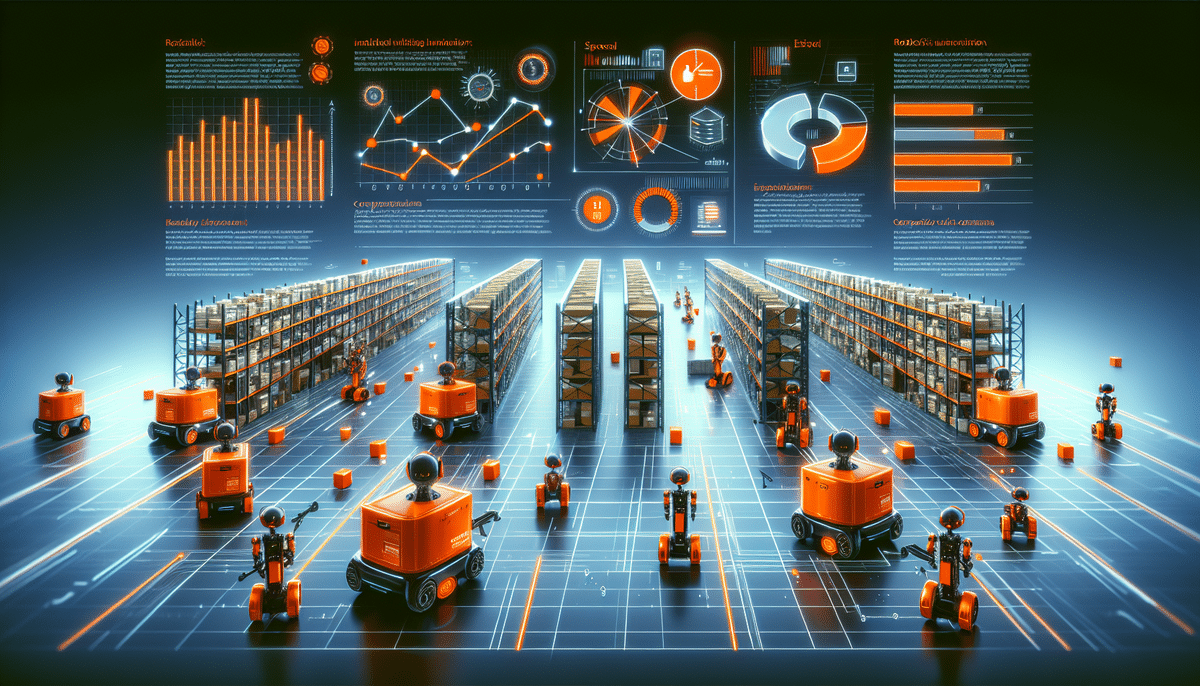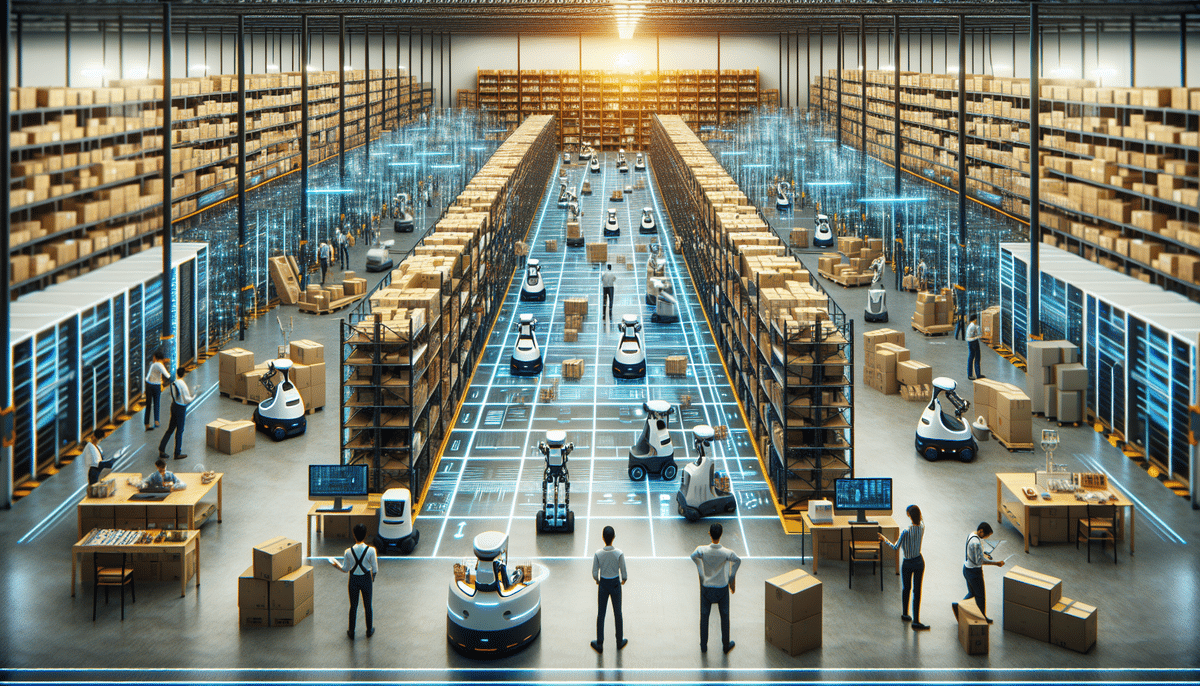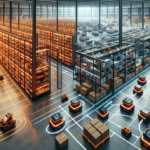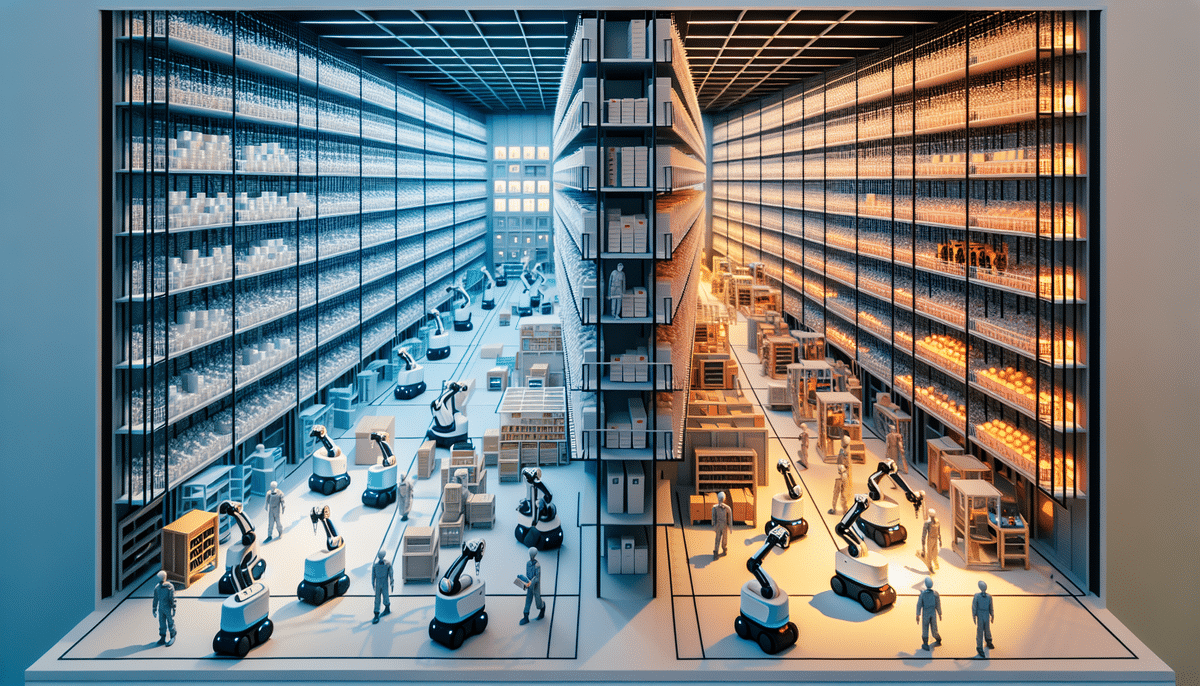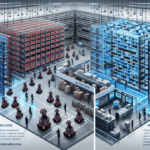Kiva Systems (Amazon Robotics) vs AutoStore
In recent years, the integration of robotics into the logistics industry has accelerated, with companies aiming to develop the most efficient automated systems. Among the frontrunners in this domain are Kiva Systems, acquired by Amazon in 2012 and rebranded as Amazon Robotics, and AutoStore. Each system offers distinct features that set them apart in the marketplace. This article provides an in-depth analysis of their history, functionality, cost implications, performance metrics, customer feedback, future prospects, maintenance requirements, and limitations. Let’s delve into these aspects in detail.
Overview: Introduction to Kiva Systems and AutoStore
Kiva Systems, now known as Amazon Robotics, is an automated material handling system that employs mobile robots to transport inventory shelves directly to pickers and packers. Founded in 2003, Kiva initially developed mobile storage units for office and industrial settings before shifting focus to warehouse automation in 2006. Amazon's acquisition of Kiva Systems for $775 million in 2012 significantly enhanced its fulfillment center operations, enabling faster processing and reduced labor costs.
AutoStore is a goods-to-person robotic system that utilizes robots navigating a grid of bins and cells containing products. Established in 1996 in Norway, AutoStore launched its commercially available system in 2004 and has since expanded its presence, particularly in Europe, with notable clients such as ASOS and Gucci.
Both Kiva Systems and AutoStore have revolutionized the logistics sector by increasing efficiency and reducing labor costs. These systems also improve warehouse safety by minimizing the need for human workers to perform physically demanding tasks. With ongoing technological advancements, the adoption of such automated systems is expected to rise, helping companies streamline operations and maintain a competitive edge.
History: Founding and Evolution of Kiva Systems and AutoStore
Founded by Mick Mountz in 2003, Kiva Systems was born out of Mountz's frustration with warehouse inefficiencies, inspired by his experience with Webvan, an online grocery delivery service that ceased operations in 2001. Mountz envisioned a solution leveraging mobile robots to optimize inventory management.
AutoStore was established in Norway in 1996 by engineer Sven H. Danielsson. The concept emerged from observing a high-density book warehouse, leading to the development of a cubic warehouse system based on similar principles. By 2004, AutoStore's system was commercially available and has since expanded across Europe.
Since their inception, both companies have transformed warehouse operations. Kiva Systems' mobile robots have been adopted by industry giants such as Amazon, Zappos, and Staples, enhancing efficiency and reducing operational costs. Similarly, AutoStore's cubic systems have been implemented by companies like Best Buy and Boozt, optimizing warehouse space utilization.
Continuous innovation has been a cornerstone for both companies. Amazon's acquisition of Kiva Systems in 2012 led to the integration of advanced robotic technology into its fulfillment centers. AutoStore has evolved by introducing the Black Line system, which offers higher storage density and faster retrieval times.
Functionality: Operational Mechanics of Kiva Systems and AutoStore
Kiva Systems (Amazon Robotics) operates by deploying small robots that transport inventory shelves directly to pickers and packers. These robots are managed by a central control system that orchestrates their movements along predefined paths, enabling easy modifications to warehouse layouts and adaptability to changing storage needs.
AutoStore utilizes robots that navigate a grid of bins and cells storing products. These robots retrieve the necessary bins and transport them to designated pick stations where human operators fulfill orders. AutoStore is renowned for its high-density storage capabilities, efficiently handling a wide variety of product sizes and weights.
Both systems offer significant improvements over traditional warehouse setups by automating inventory movement, thereby increasing efficiency and reducing human error. The precise tracking capabilities inherent in these robotic systems enhance inventory management, minimizing waste and optimizing storage.
Flexibility is another key advantage. The ability to reconfigure robot pathways and adjust bin arrangements allows these systems to swiftly adapt to fluctuating inventory levels or layout changes, making them ideal for businesses with seasonal demand variations or dynamic inventory.
Advantages of Kiva Systems: Benefits of Amazon Robotics
The Kiva System (Amazon Robotics) offers multiple advantages over conventional warehouse systems:
- Reduced Order Fulfillment Times: Accelerates the delivery process, enabling faster customer service.
- Increased Productivity and Accuracy: Enhances order accuracy and minimizes fulfillment errors.
- Flexibility and Adaptability: Easily adjusts to changes in warehouse layout and inventory levels.
- Energy Efficiency: Utilizes battery-powered robots, lowering energy consumption and operational costs.
Additionally, the Kiva System effectively handles a diverse range of products, accommodating various shapes, sizes, and weights, making it suitable for multiple industries. Its energy-efficient design aligns with sustainability goals by reducing the carbon footprint.
Advantages of AutoStore: Strengths of the AutoStore System
AutoStore presents several benefits that distinguish it from traditional warehouse systems:
- High-Density Storage Capacity: Maximizes storage space, allowing more products to be stored in smaller areas.
- Flexibility: Accommodates a wide range of product sizes and weights with ease.
- Energy Efficiency: Maintains low power consumption, contributing to cost savings and environmental sustainability.
- Scalability: Modular design allows for easy expansion to meet growing business needs.
AutoStore also enhances productivity by automating the retrieval and delivery of products, reducing reliance on manual labor and minimizing error rates. Its scalable design makes it a cost-effective solution for growing enterprises.
Cost Comparison: Financial Implications of Kiva Systems and AutoStore
Implementing a Kiva System involves a significant initial investment, estimated between $10 to $20 million. However, operational costs are relatively low, primarily due to labor savings and increased efficiency. In contrast, AutoStore requires a lower initial investment, ranging from $2 to $4 million, but may incur higher ongoing energy costs.
When choosing between these systems, it's crucial to consider factors beyond initial and operational costs. Warehouse size and layout, product types, and required throughput all influence the decision. Additionally, evaluating long-term benefits and return on investment (ROI) is essential to determine the most economical and effective solution for your business needs.
Performance Comparison: Speed, Accuracy, and Efficiency
When assessing performance metrics, Kiva Systems (Amazon Robotics) outperforms AutoStore in several areas:
- Speed and Throughput: Kiva Systems can handle up to 600 shipments per hour, whereas AutoStore manages approximately 300 shipments per hour.
- Accuracy: Kiva Systems boasts an error rate of 0.001% compared to AutoStore's 0.04%, making it more precise in order fulfillment.
These performance advantages translate to faster processing times and higher reliability in warehouse operations, enhancing overall productivity and customer satisfaction.
According to a Forbes report, implementing robotic systems like Kiva can increase warehouse throughput by up to 30%, highlighting the significant performance gains achievable through automation.
Customer Reviews: Feedback on Kiva Systems and AutoStore
Both Kiva Systems and AutoStore have garnered positive reviews from customers. Users have reported significant enhancements in warehouse operations, with some experiencing up to a 50% increase in productivity. However, the high initial costs have been a point of contention for some customers, who find the upfront investment challenging despite the long-term savings and efficiency gains.
Customers appreciate the robust performance and reliability of both systems, noting improvements in order accuracy and fulfillment speed. The scalability and flexibility of these systems also receive commendations, as they allow businesses to adapt to changing demands seamlessly.
A survey conducted by McKinsey & Company found that 75% of businesses adopting warehouse automation reported higher employee satisfaction due to reduced manual labor and improved working conditions.
Future Prospects: The Outlook for Kiva Systems and AutoStore
The future appears promising for both Kiva Systems (Amazon Robotics) and AutoStore. Amazon continues to invest heavily in Amazon Robotics, continuously integrating new features and expanding its robot fleet to meet growing demand in fulfillment centers worldwide. According to Amazon's annual report, the number of robots in their fulfillment centers is expected to double by 2025, further enhancing operational efficiency.
AutoStore has also experienced substantial growth, particularly in the European market. Its advanced technology and scalable solutions position it well to capture a larger market share as more companies seek to automate their warehouse operations. Recent partnerships with major European retailers indicate strong future demand for AutoStore systems.
Both companies are poised to benefit from the ongoing trend toward automation in logistics, driven by the need for greater efficiency, accuracy, and scalability in response to expanding e-commerce activities. Industry forecasts by Gartner suggest that the global warehouse automation market will grow to $8 billion by 2026, underlining the significant opportunities ahead.
Integration with Amazon: Utilization of Kiva Systems Technology
Amazon has seamlessly integrated Kiva Systems (Amazon Robotics) into its fulfillment centers, deploying over 200,000 robots across facilities in the US, Europe, and Asia. These robots have revolutionized order fulfillment by significantly reducing processing times, enhancing accuracy, and boosting overall productivity.
The integration facilitates real-time inventory tracking and dynamic warehouse management, enabling Amazon to efficiently handle a vast array of products and high order volumes. This technological synergy has been a key factor in Amazon's ability to maintain rapid delivery times and high customer satisfaction levels.
As reported by Business Insider, Amazon's investment in robotics has led to a 35% increase in fulfillment center efficiency, allowing the company to meet surging e-commerce demands more effectively.
Integration with Other E-commerce Platforms: Compatibility and Implementation
Both Kiva Systems and AutoStore offer integration capabilities with various e-commerce platforms. However, the integration process can be complex, often requiring substantial technical expertise and customization.
Many businesses opt to integrate these robotic systems with their existing warehouse management systems (WMS) rather than directly with their e-commerce platforms. This approach ensures a more streamlined and efficient coordination between inventory management and order processing, leveraging the strengths of both robotic systems and WMS software.
Collaborations with third-party integrators and specialized software providers can facilitate smoother integration processes, enabling businesses to maximize the benefits of automation without disrupting existing operations. According to a report by Supply Chain Dive, successful integration with WMS can reduce operational downtime by up to 25%.
Maintenance Comparison: Maintenance Requirements of Kiva Systems and AutoStore
Maintaining both Kiva Systems and AutoStore is essential for optimal performance. However, Kiva Systems (Amazon Robotics) generally requires less maintenance compared to AutoStore. Its predefined robot pathways simplify movement tracking and allow for easier identification and resolution of potential issues.
AutoStore systems, while highly efficient, may require more intensive maintenance efforts to manage the grid of bins and ensure smooth robot operations. Regular software updates, hardware checks, and system calibrations are necessary to maintain peak performance levels.
Both systems benefit from proactive maintenance schedules and the use of predictive analytics to anticipate and address maintenance needs before they impact operations. Implementing predictive maintenance can reduce unexpected downtime by up to 30%, as noted by Forrester Research.
Limitations of Kiva Systems and AutoStore
Despite their advantages, both Kiva Systems (Amazon Robotics) and AutoStore have limitations:
- Kiva Systems: Primarily suited for large warehouses and fulfillment centers, making it less feasible for smaller operations. The high initial investment can be a barrier for many businesses.
- AutoStore: Relies on human operators at pick stations, which can introduce bottlenecks and slow down order fulfillment times. Additionally, the complexity of its grid system may require more extensive maintenance.
Businesses must weigh these limitations against the benefits to determine the most suitable robotic system for their specific needs and operational scale.
Conclusion: Choosing the Right System for Your Business
Both Kiva Systems (Amazon Robotics) and AutoStore offer unique features that cater to different business requirements. The decision between the two depends on various factors:
- Scale of Operations: Kiva Systems is ideal for large fulfillment centers with high order volumes, while AutoStore may be more suitable for medium-sized warehouses.
- Budget Constraints: AutoStore has a lower initial cost, making it accessible for businesses with tighter budgets, whereas Kiva Systems requires a significant upfront investment but offers substantial long-term savings.
- Flexibility and Scalability: Both systems offer flexibility, but AutoStore's modular design allows for easier scalability, catering to growing businesses.
- Maintenance and Operational Needs: Kiva Systems generally demand less maintenance, which may appeal to businesses seeking low-maintenance solutions.
Ultimately, the choice will depend on your specific operational needs, financial considerations, and long-term business goals. Carefully evaluating these factors will help you determine which system—Kiva Systems or AutoStore—aligns best with your business strategy and operational requirements.













